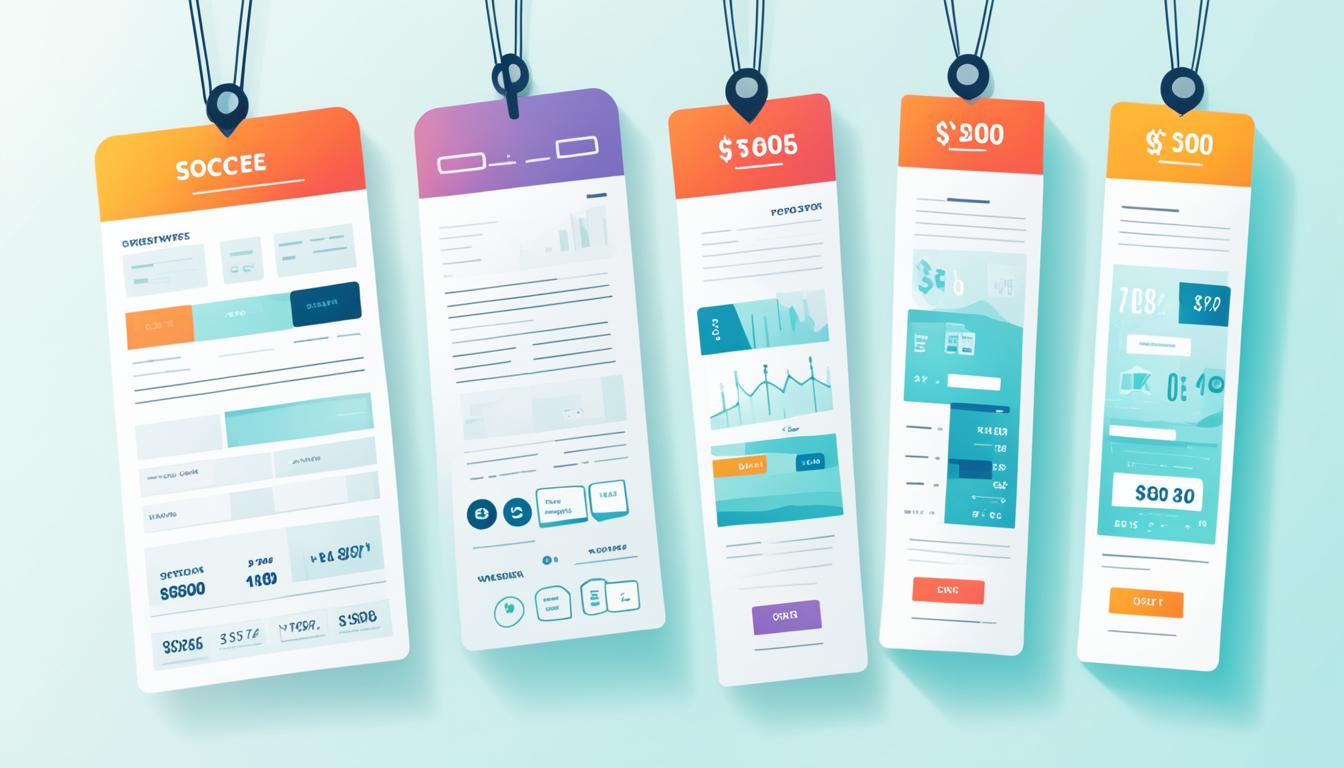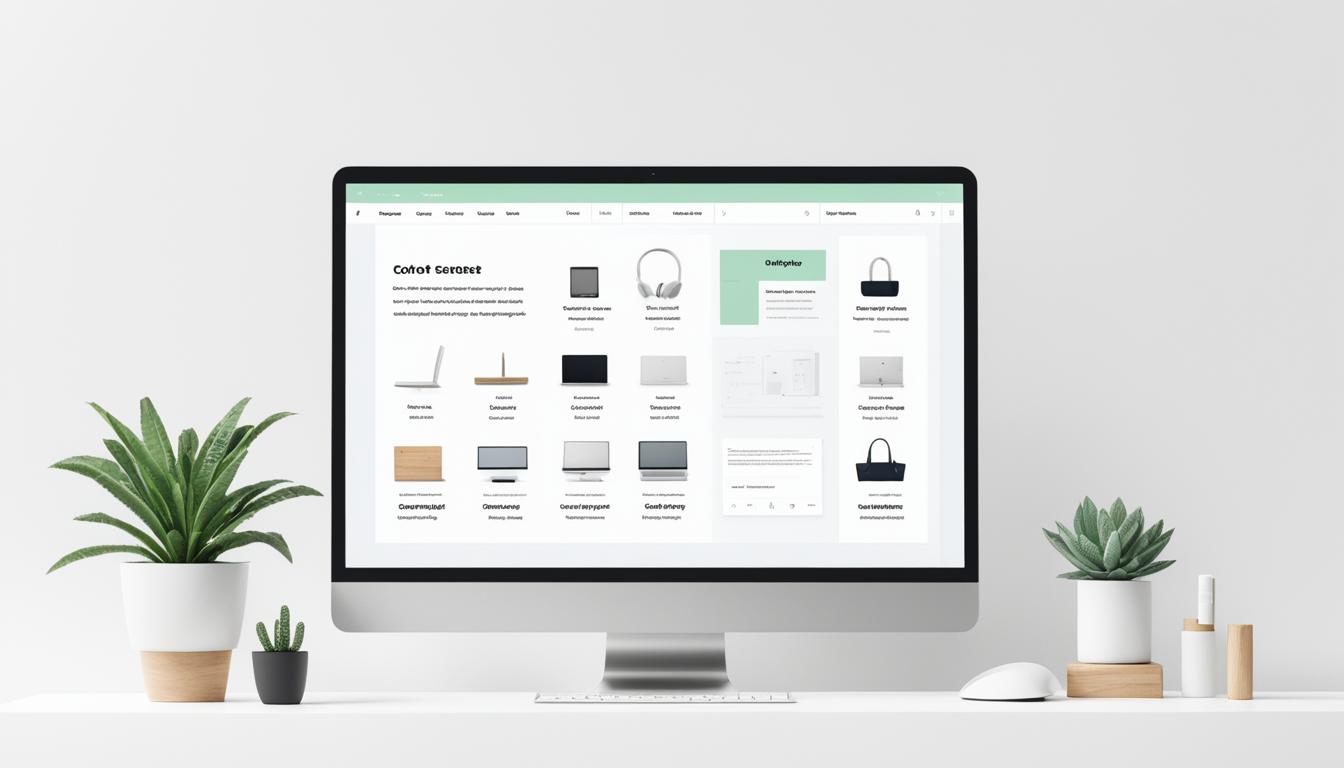Creating a Site: How to Website Design Guide
Designing a visually stunning and user-friendly website may seem overwhelming, but with the right tools and resources, anyone can create their own site. In this comprehensive guide, we will walk you through the basic steps of website design and provide you with important considerations to keep in mind.
Before you begin designing your website, there are a few essentials you’ll need to have in place, including a website builder, domain name, web hosting, SSL certificate, SEO tool, and a POS system if you plan on accepting payments. We will discuss each of these components in detail and provide recommendations for popular providers in each category.
Whether you’re a beginner or have some experience with web design, this guide will serve as a valuable resource to help you navigate the process. From establishing your website’s purpose to optimizing it for search engines and creating engaging user experiences, we’ll cover it all. Stay tuned for our step-by-step guide on how to design a website in 9 simple steps.
How to Design a Website in 9 Steps
When it comes to designing a website, it’s essential to follow a step-by-step process to ensure a successful outcome. This 9-step guide will walk you through each stage of the website design process, from defining your website’s purpose to optimizing it for mobile devices and ensuring optimal user engagement.
Step 1: Define Your Website’s Purpose
Before diving into the design process, it’s crucial to clearly define the purpose of your website. Whether it’s to showcase your portfolio, sell products, or provide information, understanding your website’s purpose will shape the entire design and layout.
Step 2: Choose a Website Platform
Selecting the right website platform is a critical decision. Consider factors such as ease of use, customization options, and scalability. Popular website platforms include WordPress, Shopify, Wix, and Squarespace.
Step 3: Plan Your Website Layout
Designing an effective website layout involves organizing your content and determining the placement of key elements. Create a wireframe or use design tools to sketch out the placement of headers, navigation, and other important sections.
Step 4: Create Engaging Web Pages
Each web page on your site should have a clear purpose and deliver valuable content to your audience. Develop well-crafted copy, eye-catching visuals, and interactive elements to keep users engaged.
Step 5: Incorporate Essential Website Elements
Optimize your website’s functionality and user experience by incorporating essential elements such as contact forms, social media integration, search bars, and navigation menus. These elements enhance usability and make it easier for visitors to find what they’re looking for.
Step 6: Utilize Web Design Tools
Maximize efficiency and productivity by leveraging web design tools such as Adobe Photoshop, Sketch, or Figma. These tools offer features and templates that simplify the design process and allow you to create visually stunning websites.
Step 7: Optimize for Mobile Devices
In today’s mobile-driven world, it’s crucial to ensure your website is mobile-friendly. Optimize your design for smaller screens, prioritize mobile responsiveness, and test your site’s performance across various devices and screen sizes.
Step 8: Implement SEO Optimization
Boost your website’s search engine visibility by implementing SEO best practices. Conduct keyword research, optimize meta tags, create compelling meta descriptions, and develop a content strategy that includes relevant keywords.
Step 9: Foster User Engagement
An engaging website keeps visitors coming back for more. Incorporate interactive features such as comment sections, social media sharing buttons, and personalized recommendations to encourage user interaction and build a loyal audience.
| Step | Description |
|---|---|
| 1 | Define Your Website’s Purpose |
| 2 | Choose a Website Platform |
| 3 | Plan Your Website Layout |
| 4 | Create Engaging Web Pages |
| 5 | Incorporate Essential Website Elements |
| 6 | Utilize Web Design Tools |
| 7 | Optimize for Mobile Devices |
| 8 | Implement SEO Optimization |
| 9 | Foster User Engagement |
Conclusion
Designing a website may initially seem like a daunting task, but with the right guidance and resources, it can be an accessible and rewarding process. By following the steps outlined in this guide, you can create a visually appealing and user-friendly website that meets your goals and engages your target audience.
Remember to define the purpose of your website, choose the right platform, gather essential brand elements, and design each site element thoughtfully. This will ensure that your website effectively communicates your message and aligns with your brand identity.
Before launching your website, it is crucial to test and optimize your content. This includes conducting thorough checks for any errors or broken links and optimizing your website for mobile devices to provide a seamless experience for users across all devices. Additionally, implementing SEO optimization strategies will help improve your website’s visibility in search engine results, driving organic traffic to your site.
Once your website is live, it is important to regularly monitor and update it based on user feedback and evolving trends. Keeping your website’s content fresh and relevant will ensure that your audience remains engaged and satisfied. By following these steps, you’ll be well-equipped to create a successful website that showcases your brand and achieves your desired objectives.
FAQ
What are the essential components needed to design a website?
The essential components needed to design a website include a website builder, domain name, web hosting, SSL certificate, SEO tool, and a POS system for accepting payments.
What is the 9-step process for designing a website?
The 9-step process for designing a website includes defining the website’s purpose, choosing the right platform, gathering brand elements, designing the website layout, creating web pages and elements, utilizing web design tools, optimizing for mobile devices, performing SEO optimization, and focusing on user engagement.
How can I create a visually appealing and user-friendly website?
You can create a visually appealing and user-friendly website by defining your website’s purpose, choosing a suitable platform, gathering essential brand elements, designing each site element thoughtfully, testing and optimizing content before launching, and regularly monitoring and updating your website as needed.










